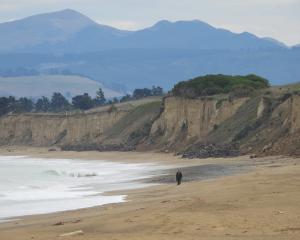Cleaning two of the power station's generators began last month, as part of a four-year programme of works to refurbish the dam and powerhouse, before a longer-term project to eventually upgrade the powerhouse's generator units.
Meridian Energy strategic assets manager Richard Griffiths said the $45 million refurbishment was stage one of a two-stage project, which would eventually cost about $135 million.
He said the first stage involved mainly structural work on the powerhouse, the dam and the area around it.
''The second stage ... is the upgrade of four of the seven generation units.
''The scope of that first stage enables us to effectively defer the generating plant upgrade without taking on any more risk.''
''It gives us ... a greater level of redundancy should one of the other units fail and enables us then to defer, as long as we can, the actual upgrades on the generating plant. That's a $90 million piece of work that will get under way once we either see the first failure or other indications of a failure.''
Work to reinstate generator 3 would start in September and take about a year to complete, he said.
Mr Griffiths said about 85% of revenue from the Waitaki powerhouse was generated from just four units, so ''one or two failures'' could be accommodated.
Although stage two of the project might not need to begin for another five to 10 years, a new digital unit protection system would also be installed to better identify potential problems.
Mr Griffiths said with the exception of generators 1 and 2, which were fitted with replacement parts in the 1950s, the rest of the generating units were in their original state.
''That's quite extraordinary and testament to the engineering of the day, and the way we have maintained those units.
''That being said, we do have issues with the plant - we have cracks in the turbines that we repair on a reasonably frequent basis.''
The stators were injected with resin in 1992 in a bid to prolong their lives for another five or 10 years and this process now made it ''difficult to ascertain when they might fail''. The project also involved carrying out some earthquake-remediation work so the powerhouse could cope with a 1-in-2500 year quake.
Although the 1930s dam was assessed as fully compliant with modern building standards in the event of the ''maximum, probable'' earthquake, the performance of the under-dam drainage system would be upgraded, Mr Griffiths said. ''A good chunk'' of work on the first stage involved erosion mitigation on the power race, below the switch yard, and around the sluice gate.
The original 1930s-built main 120-tonne machine hall crane would also be upgraded, with new drives and motors and a remote-control capacity, and the carbon dioxide fire control systems would be replaced with inergen-based systems, he said.












